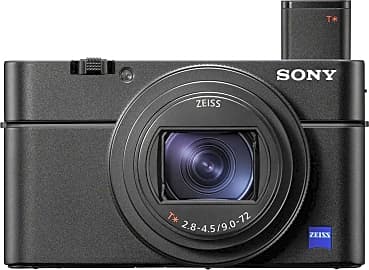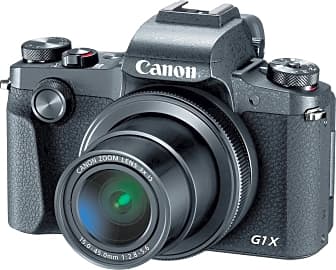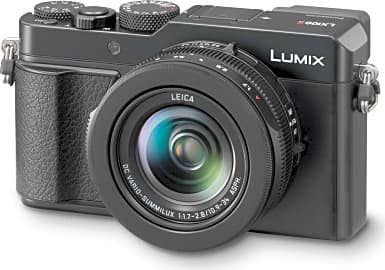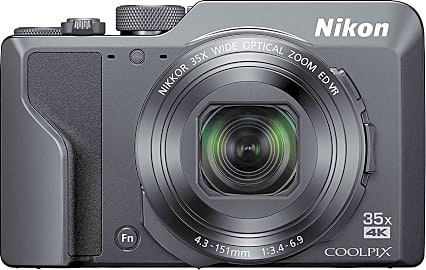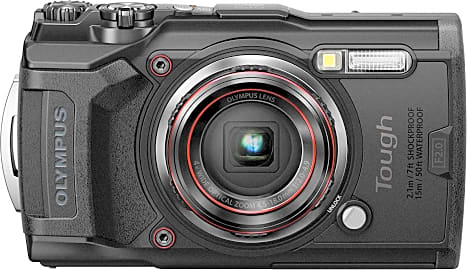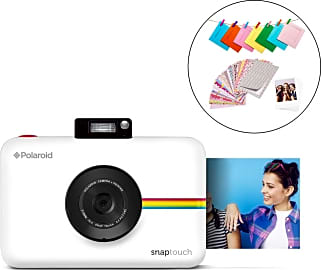The 10 Best Compact Cameras

This wiki has been updated 35 times since it was first published in March of 2016. If you're tired of the lackluster image quality your phone's camera provides, then consider one of these dedicated, pocket-sized solutions instead. Not only do they minimize the need to lug around a bunch of heavy equipment, but many boast innovative features, including Wi-Fi connectivity, built-in image stabilization, and intelligent auto-focusing technology, all in a compact package. When users buy our independently chosen editorial selections, we may earn commissions to help fund the Wiki.
Editor's Notes
January 14, 2021:
While all of our previous picks for this category continued to remain great picks a year later, we did end up beefing up our list with a couple additional options.
The Fujifilm X100V is a bit bigger than our original pick from the company – the Fujifilm XF10 – but we like that the X100V offers an electronic viewfinder and tilt LCD, and we also appreciated its weather-sealed design. Overall, even though it weighs 40% more than the XF10, we’re confident that many users shopping in this category will still be interested in the X100V.
The Leica Q2 Monochrom – which features a 47-megapixel sensor and is capable of shooting some amazingly crisp stills – is an option that we considered adding last time around, but ultimately decided that it was a bit too bulky for the category. During this round of updates, bearing in mind that the unit is still small enough to fit in many jacket pockets, we decided to reconsider and add the Q2 to our list. Just note that, if you’re specifically looking for a model that’s slim enough to fit into your pants pocket, then this likely isn’t the camera for you.
December 10, 2019:
While the point-and-shoot sector is reliably being eviscerated by the increasing image quality on most smartphones, camera manufacturers have realized that consumers can still tell the difference when shooting with larger sensors and bigger lenses than the average phone can house, and they've taken pains to pack those features into compact models that populate our list. That means these small cameras take better pictures than ever, with no lag time or unsightly flash effects. It also means they cost more than the average point-and-shoot, but not by too much.
We put a serious emphasis on portability, specifically the ability to fit these cameras in a pocket without bothering with a case. That's why the Sony RX100 VII Premium remains so highly regarded, both by us and the industry at large. It offers tremendous image quality and performance in one of the most compact packages available. The Canon PowerShot G1 X Mark III pushes the limit of this size mandate, but its quality and comfort fitting into the average purse kept it in the running. There were some other cameras we wanted to include, like the Leica Q2 with its full-frame sensor, that were just too big at the end of the day, even if they're marketed as compact options.
We also saw fit to swap out the Fujifilm Instax 9 for the Polaroid Snap Touch 2.0, which is not only a newer model, but one whose image and print quality undeniably surpasses its Fuji counterpart. It also offers a touchscreen interface for image review, and the ability to back up pictures to a micro SD card for later review and editing.
A Matter Of Size
The other great thing about carrying around a compact camera is that, if you so desire, you can go untethered.
Throughout the years that I worked at a little camera store outside Philadelphia, a funny coincidence would often occur. The store was divided into two sides, the sales side and the prints side. I worked on the sales side. There were two doors at either end of the store that connected the sides, allowing customers to move freely between them, and allowing us to hear almost everything that was going on on the prints side.
Often, at the exact same time, a customer on the sales side would ask us why he or she still needed to buy a camera at all these days, since the camera on their phone was so good. Meanwhile, on the prints side, another customer would complain that the picture they had printed from their cell phone didn't look good enough.
The point is that all cell phones suffer from two build features that seem to always keep them just a step behind the camera competition: they have tiny lenses and tiny sensors. Take your phone out of your pocket right now and look at the camera lens. It's about the diameter of a cheap ballpoint pen. By extension, the sensor is even smaller, since a sensor larger than the lens in front of it would be a waste of space.
The compact cameras on our list, however, have much larger lenses and sensors. That means more light collection, the ability to zoom optically instead of digitally, better bokeh (that fancy effect that blurs the background of a picture), superior low light performance, and higher overall picture quality.
The other great thing about carrying around a compact camera is that, if you so desire, you can go untethered. One of the things about shooting with your phone that makes certain kinds of photography less exciting is that you're still connected to the world and its web. When you use a camera instead of your phone, you can leave the leash at home, go out into the world with fresh eyes, and take some great pictures.
Zoom To Roam
Camera manufacturers have bent over backward in the past few years trying to keep the compact sector of the market from dying out completely. They've added more and more features, unique capabilities, internet connectivity, and more to their lineup of cameras. While that's a great thing for the consumer, it does make it a little more difficult to compare one camera to the next. Fortunately, some of the same questions that apply to customers shopping for high-end D-SLRs work just as well for customers in the compact camera market.
While that's a great thing for the consumer, it does make it a little more difficult to compare one camera to the next.
For starters, what are you actually shooting? If you're trying to capture events in and around your home–birthday parties, graduation celebrations, etc.–you probably don't need a camera that boasts a giant zoom. You'll take most of your pictures at a wider angle, and you can always get closer to your subjects without much trouble. An added benefit to this kind of purchase is that less zoom means better pictures.
When a manufacturer builds a zoom lens, they have to calibrate it to be as sharp as possible at each point in the zoom. The way the physics of it pan out, however, sharpness is like eight ounces of water that has to be distributed across all focal lengths. If you have only one focal length, or one glass, you can put all of your water in that and achieve maximum sharpness. If you have a 20x zoom, you have to divide those eight ounces across 20 glasses, and none is as sharp (or as full) as that solitary one could have been.
If you're more interested in getting out and shooting wildlife or sports, anything really that keeps you at a distance from your subject, you'll want a better zoom. Even if your sharpness takes a hit, it always looks better to zoom in the camera than it does to crop in in post.
Finally, if you're interested in making a serious foray into photography, or if you know you're going to spend a lot of time shooting in very sunny areas, it's a good idea to try to find a camera with a viewfinder, or at least with the option to add a viewfinder. These make it much easier to frame up a shot when the glare from the sun slams into the back screen with all its might, and they take you one step closer to feeling like a pro with your camera held up to your face.
After that, you can ask yourself whether things like 4K video, image stabilization, WiFi connectivity, and other tertiary features matter to you. One of those might just tip the scales between two otherwise identical choices.
A Smaller Standard
Cameras have been pretty big from the start. Once the pioneers of the science developed their unique methods for capturing light, the plates on which they exposed their negatives and positives were nearly as big as a standard piece of paper. The reason was that there was no technology to increase the size of an image in printing, so you had to take a photo at the size you wanted it printed.
This level of standardization led to the advent of the disposable camera, among other things.
Roughly 150 years later, after celluloid film had become a standard in photography, manufacturers settled down around a 35mm format that would slowly, but surely, reduce the size of camera gear to something much more tenable for the average consumer. This level of standardization led to the advent of the disposable camera, among other things.
The compact cameras on our list wouldn't come into existence until digital photography entered the marketplace with any degree of success in the 1990s. At the time, the ability to see the picture you took immediately on a little screen seemed like a novelty, and the resolution couldn't compete with that of film for many years.
Still, even in those days, the success of smaller, consumer-oriented 35mm film cameras told camera companies that they had a market waiting for them if they wanted to release friendly, high-quality compacts into the world. So they did, and those little guys have been getting better and better ever since.


